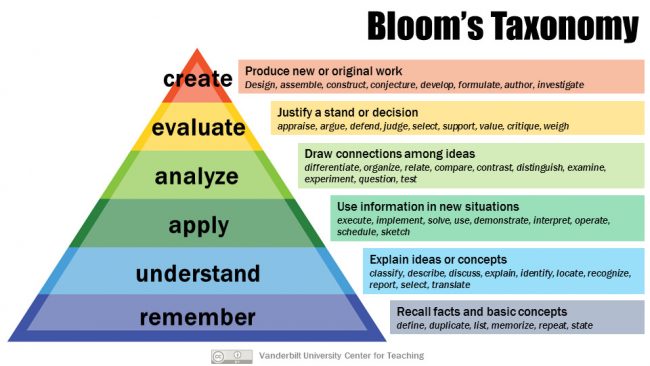Responding to questions such as “Why is the sky blue?” demands high-order thinking skills from both the student and the teacher. Allowing students to explore a broad topic and choose questions they are invested in creates the best environment for successful inquiry-based projects. Students benefit from learning and negotiating through group investigation to answer a question.
Teachers who wish to engage in inquiry-based learning set the stage for this process in three ways:
- Assess students to determine their knowledge of the topic and lay the groundwork when that knowledge does not exist.
- Match the scope of the inquiry question to the learning level of students.
- Provide resources and/or internet search strategies for locating credible resources to inform the inquiry.
The teacher’s role in inquiry-based learning is one of mentor and advisor. Students may struggle through problems; however, if the struggle occurs at a level that students may be successful, this struggle is worthwhile. In this case, the teacher’s most challenging role is to resist answering questions that would inform the inquiry and, therefore, negate the process for the student!
Inquiry-based learning requires time and patience; however, this teaching strategy lays the groundwork for real-world learning in which students will engage throughout their lives (Sharples, Collins, Feißt, Gaved, Mulholland, Paxton, & Wright, 2011).
Discovery Learning
“Discovery learning is a type of learning where learners construct their own knowledge by experimenting with a domain and inferring rules from the results of these experiments” (Van Joolingen, 2000, p.385).
In today’s educational realm, discovery learning is also called problem-based or experiential learning. Students participate through a hands-on approach, and learning is interactive. Through discovery learning, students are encouraged to explore with little guidance from the instructor. Discovery learning is based on the beliefs of Piaget (Ültanır, 2012), in which students are provided with a topic, and from that point, students choose how they are going to learn, discover new information, synthesize the information and do so without correction from the teacher. The teacher gives feedback to the student, as do the other class members, once the project is complete.
It is important that teachers create specific goals and guide students through discovery learning using pre-determined structures, such as group work, fieldwork, or interaction with others. Unless this is the case, students may have too much freedom, resulting in a lack of rigor within the method. However, Mayer (2004) states, “In many ways, guided discovery offers the best method for promoting constructivist learning. The challenge of teaching by guided discovery is knowing how much and what kind of guidance to provide and how to specify the desired outcome of learning.” (p.14)
Cooperative Learning
In group work, students are assigned one or more partners to collaborate on ideas in a strategy like think-pair-share or problem-solving. Before students begin working, the teacher explains the objectives, expectations, and details of the activity or project. This explanation is meant to ensure all group members understand the group’s goal. As the group works together, all members are expected to teach and learn from each other. At the end of the group activity, the teacher may debrief with groups or may provide a grade on a group artifact.
Students often need to be oriented on how to work effectively with their peers. Listening to group members’ ideas and not attaching self-worth to proposed ideas go a long way toward reaching the activity’s goals. Compromise is a skill that requires practice to be effective. Aligning group activities with the Social and Emotional Learning (SEL) Benchmarks (New York State, 2018) provides a well-defined way to identify and advance students’ skills to be effective group members.
When engaging students in group work, teachers should circulate to monitor the groups’ progress toward accomplishing the lesson’s objectives. Asking groups what they are discussing and why that is important to the topic reinforces the idea that the group activity is educational. As teachers see group behavior that is not on-task, the teacher should not hesitate to address this with the group. This reinforces to all groups that students are individually accountable for their behavior in the group. They are not “lost in a crowd” (Blatchford, Kutnick, Baines, & Galton, 2003).
 Deeper Dive
Deeper Dive
Project-Based Learning
Project-based learning (PBL) is another instructional method that can be used to engage students. PBL allows students to approach learning through exploration and collaboration. The articles linked below provide more context about what this type of instruction might look like in context.

